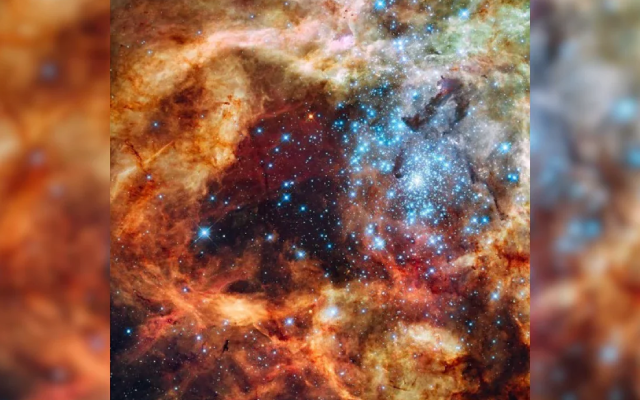Beautiful pictures of our universe are frequently taken by the National Aeronautics and Space Administration (NASA), captivating the attention of space enthusiasts. The US Space Agency’s social media accounts are a veritable gold mine for anyone who enjoys watching informative films and eye-catching pictures of Earth and space. The Hubble Space Telescope of the organization recently posted a photo of the “fierce and fabulous” Tarantula Nebula.
In the image, a cluster of glowing blue stars is seen closer to the right side in the centre of the image. The stars are clustered in the centre and then sparsely distributed across the image. The stars are also surrounded by burnt orange and tan-coloured gas and dust, which encompass the entire image. Further, the nebula’s core is dominated by a dark formation.
View this post on Instagram
According to NASA, the Hubble telescope collected data in ultraviolet light, which is only visible from space, as part of an extensive survey called the Ultraviolet Legacy Library of Young Stars as Essential Standards. Astronomers will benefit from this data for many years to come in their research. Data on about 500 stars was collected over a three-year period, yielding new insights into star formation, evolution, and the effects of their surroundings.
“Two categories of stars were studied in this survey: Super-hot massive stars and young less massive stars. The super-hot massive, blue stars are a million times brighter than the Sun and have a fierce glow in ultraviolet light which can be easily detected by Hubble. These stars have powerful winds that drive galaxy evolution. ULLYSES targeted these blue stars in nearby galaxies because they were common in the early universe,” the space agency added.
During their early stages of development, young stars that were less in mass than the Sun released high-energy radiation as well as bursts of X-rays and ultraviolet light. As the stars are still growing, “they continue to gather material from their surroundings.”
The survey comprises the method by which stars attain their mass and the amount of energy that is discharged into the surrounding environment. As per NASA, “These observations are just a stepping stone to understanding the first stars of the universe and how they impacted the evolution of the galaxy.”
Read More
Aswath Damodaran Weighs In on India’s Challenges and Potential

















